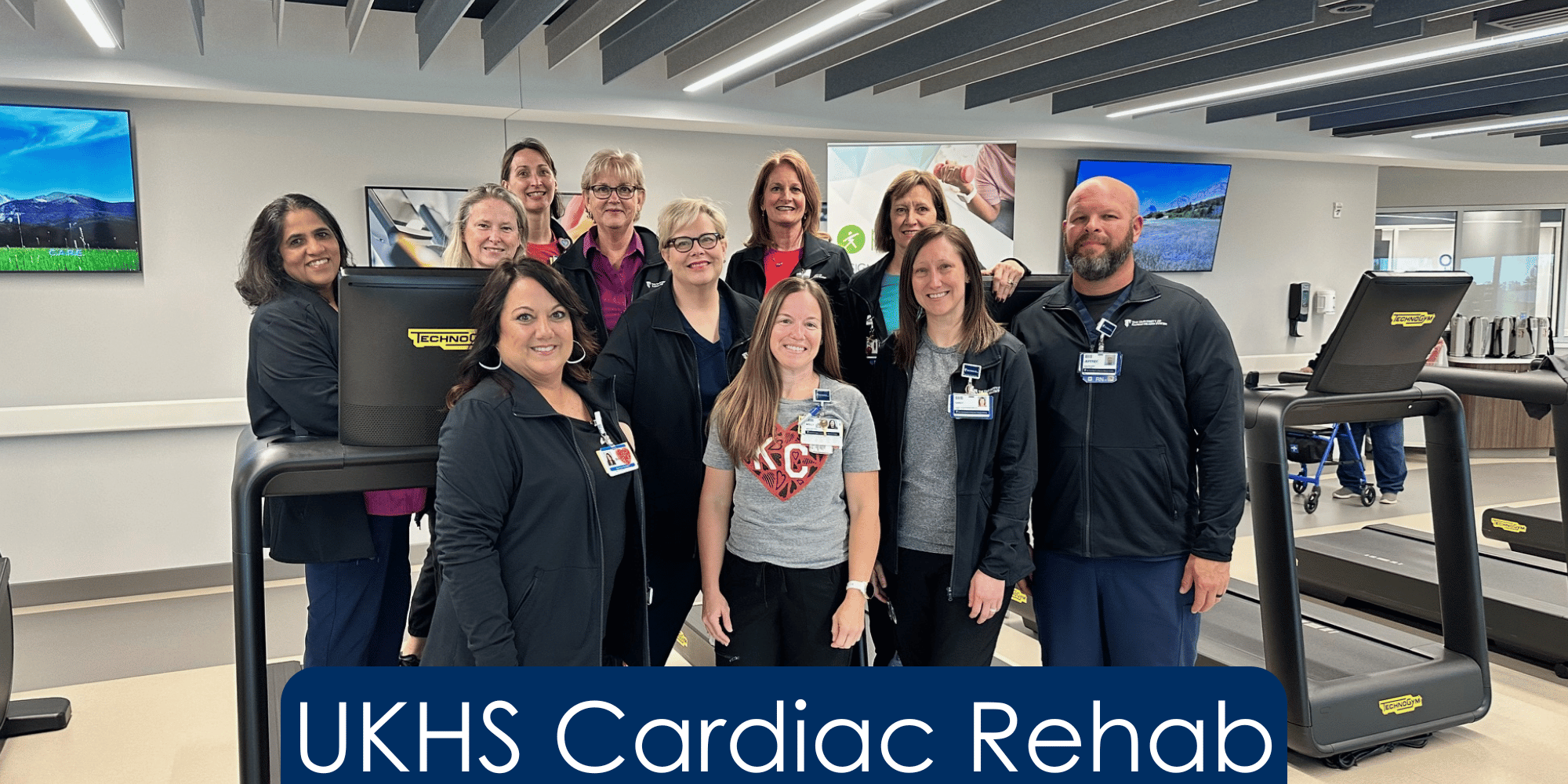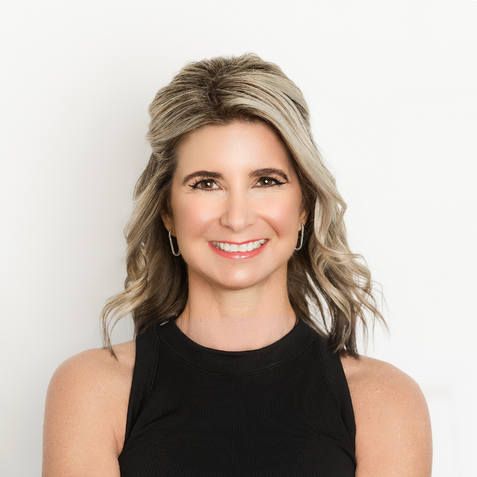Over the past ten years, I’ve had the opportunity to work closely with many clients offering the Pritikin Intensive Cardiac Rehabilitation (ICR) program. While each is unique, sometimes I’m blown away by a dramatic increase in patient volume after a program implements Pritikin ICR. Ever since the University of Kansas Health System’s cardiac rehab (CR) department at Olathe Health transitioned its program to ICR in 2022, it’s been amazing to watch the department exceed everyone’s expectations. Inspired, I reached out to Michele Hobby, RN, BSN, CCRP, Cardiopulmonary Rehab Manager at UKHS to learn more about her team’s approach and patients’ response to the Pritikin program.
How has the Pritikin program sparked an increase in volume?
 Michele describes her team’s success beginning with the physicians and nurse practitioners who believe in the lifestyle medicine approach that ICR provides. After a patient has been hospitalized with a qualifying diagnosis, they are automatically referred to the outpatient cardiac rehab program. Then, a dedicated team member meets with the patient and keeps in touch to help them schedule their first visit.
Michele describes her team’s success beginning with the physicians and nurse practitioners who believe in the lifestyle medicine approach that ICR provides. After a patient has been hospitalized with a qualifying diagnosis, they are automatically referred to the outpatient cardiac rehab program. Then, a dedicated team member meets with the patient and keeps in touch to help them schedule their first visit.
Once there, the UKHS team encourages all patients to take full advantage of the comprehensive Pritikin lifestyle education curriculum. This is important because research studies have shown the education component is essential for superior clinical outcomes compared to traditional cardiac rehab, where lifestyle education is typically very limited.
As a consultant, I’m in close contact with my clients to share best practices and determine where improvements can be made to optimize both clinical and financial outcomes. The cardiac rehab team at UKHS doubled their patient volume within five months of implementing ICR. They further improved this metric after recently implementing some process adjustments to ensure all patients with insurance coverage are receiving the benefits of ICR.
When a cardiac rehab department is considering transitioning to the Pritikin curriculum, we tell them they can expect to double their session volume. The team at University of Kansas Health System has far surpassed that projection. They have seen a 140% increase in volume since adopting the Pritikin program!
How does ICR further patient education and enhance outcomes?
The short answer is that ICR offers clinicians more time and tools for educating patients. Let me explain.
In traditional cardiac rehab, patients are limited to 36 sessions of mostly exercise. When enrolled in ICR, a patient can participate in up to 72 sessions with a more comprehensive approach to lifestyle change. Like traditional CR, ICR patients will participate in 36 visits, but the difference is they receive two sessions per visit (one exercise and one education). This is significant because when staff have more time and resources to treat patients, outcomes improve.
Additionally, we know there is a strong dose-response with cardiac rehab – the more sessions a patient attends, the less risk of suffering another cardiovascular event or dying. In fact, Medicare, Medicare Advantage, and most private/commercial payors acknowledge the importance of secondary prevention and reduced readmissions and subsequently offer their beneficiaries coverage for ICR. With practical education, patients walk away from ICR better equipped to make lasting lifestyle changes.
Michele and her team have seen first-hand how incorporating ICR benefits patients. She shared:
“The Pritikin curriculum has been a game changer in increasing the knowledge base of our patients. Answering not only the “why” but the “how” has been very rewarding to witness.”
The Team
Each time I interact with the UKHS cardiac rehab team, I’m blown away by their positive energy. What inspires me most is how they interact with each other as they work to achieve their common goals. As with any team, management sets the tone and Michele Hobby leads by example. Michele’s always ready and willing to jump in and help. She’s also open to suggestions and scrutinizing her processes to ensure her program is running as efficiently as possible.
Michele was drawn to cardiac rehab as it allowed her to combine her love of fitness with nursing. She found her calling in being able to “teach each patient how to look and live beyond their diagnosis for living a healthy, fulfilling life.” She has been a nurse for 28 years, 18 of which have been dedicated to cardiopulmonary rehabilitation.
Her team is just as dedicated, and everyone brings a diverse perspective and background. The group’s experience in patient care ranges from 15 to 30 years. Furthermore, many have 20+ years in the UKHS Cardiac Rehab department! Michele shared:
“I feel my team motivates me every day. They are professional, caring, and truly enjoy their job. We have birthday lunches and holiday celebrations. We work extremely well together.”
Every time I visit, I’m amazed by the positive and welcoming environment they’ve created for their patients. Given the fact that many on the UKHS CR team have been there for some time, I asked Michele how the transition from traditional cardiac rehab to the Pritikin ICR program was received. After seeing this team in action, I wasn’t surprised by her response:
“Since starting ICR, our team has been rejuvenated by the in-depth educational materials available to all our patients. Between the videos, live workshops, and cooking demonstrations, we now offer accessible education to all our patients regardless of their different learning styles. My team can meet a patient where they are in the healing process—not only physically but mentally as well.”
The Facility
 UKHS CR has a beautiful open space with many windows allowing for plenty of natural light. They have a 150 ft walking track that surrounds their exercise equipment and stretching area. The exercise equipment on the floor consists of 7 treadmills, 5 recumbent bikes, 7 recumbent cross trainers, 2 ellipticals, 2 arm ergometers, and weights.
UKHS CR has a beautiful open space with many windows allowing for plenty of natural light. They have a 150 ft walking track that surrounds their exercise equipment and stretching area. The exercise equipment on the floor consists of 7 treadmills, 5 recumbent bikes, 7 recumbent cross trainers, 2 ellipticals, 2 arm ergometers, and weights.
 Before patients exercise, they go to a dedicated space where they are hooked up to telemetry for monitoring their heart rhythm. Staff monitoring stations allow up to 22 patients to be monitored in each class.
Before patients exercise, they go to a dedicated space where they are hooked up to telemetry for monitoring their heart rhythm. Staff monitoring stations allow up to 22 patients to be monitored in each class.
Group education classes include videos, live workshops, and cooking demonstrations that take place in a dedicated room to accommodate patients and their support person if they choose to bring one.
The Patient Experience
During a patient’s first visit to UKHS CR, they are greeted by a beautiful reception area and welcomed by one of Michele’s team members for a one-on-one orientation visit. The patient is encouraged to share their story, medical history, and any concerns they may have about cardiac rehabilitation. Then, the patient completes outcomes surveys and assessments including a 6-minute walk test.
All information collected is considered when creating the patient’s individualized treatment plan. Before leaving, the team explains how the program works and answers any questions. The goal during these initial meetings is to meet the patient where they are in the healing process, offer support, and set goals.
Michele, her team, and patients have bought into the Pritikin ICR program because it works. Patients find the mental strength within themselves to make significant changes in the way they view and approach life. They each come away with something that resonates, “whether it be their perception of exercise, making better food choices, recognizing the need for socialization, and/or understanding that any positive changes, they are progressing.”
Final Thoughts
As we wrapped up our conversation, I asked Michele to share her favorite part of working in cardiac rehab and her sincerity and passion for what she does shines through in the answer she shared, “There are many rewards with working in such a positive environment. One that seems to repeat itself often is witnessing patients transform from scared and unsure to a confident person that’s eager to not only exercise but make healthy lifestyle choices.”
Thank you, Michele, and the entire UKHS CR team for reminding me of the importance of our work and for your tireless efforts! I am so proud of this team and all they have accomplished since adopting Pritikin ICR.
Keep up the great work, UKHS!



